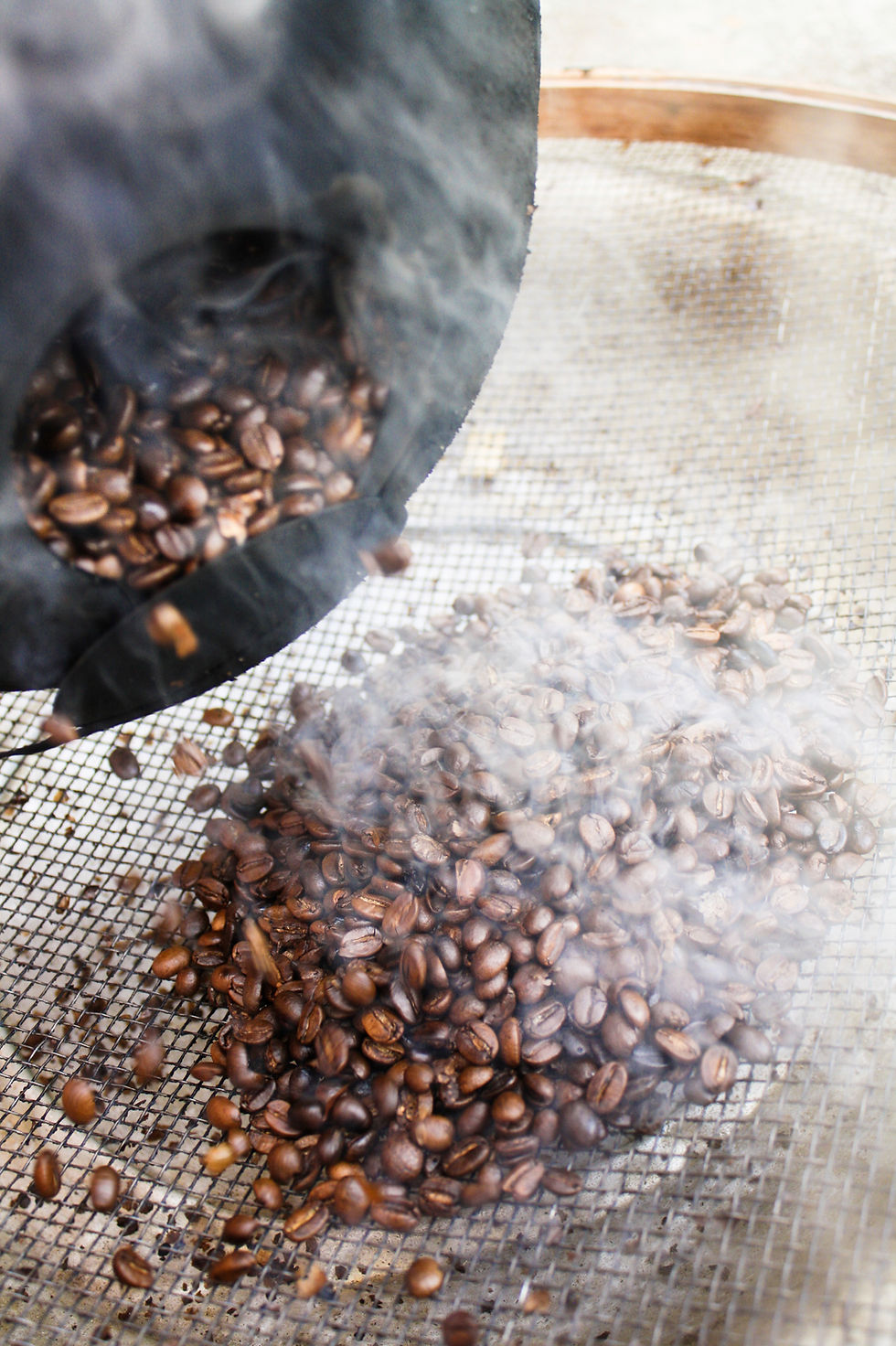Stove-TOP Tips.
- BRU Coffee Roasters
- Jun 11, 2023
- 3 min read

We want to take you back in time to 1933 when Alfonso Bialetti invented the Moka Express. He has built on that foundation of simple quality design.
A tiny, Italian-made, eight-sided wonder, the Moka pot was born after the great depression, a companion to many during World War II and with us on many journeys, now present in most kitchens. It’s experiencing a resurgence lately, which is no doubt due to its ability to produce a viscous, appropriately dense espresso with no electricity or fancy equipment. We’re also charmed by the little gurgle it makes as it works its magic on the stovetop.
There is a wide range of stovetops available all for specific purposes. At BRU our favourite is the Bialetti Brikka and it is probably also the pot that most of the crew use for their morning ritual. It features a specially designed valve that produces coffee under pressure. The result is an extraction with a concentration almost twice that of the Moka Express. The increased pressure cause a noticeable increase in the amount of crèma. The valve “hold” the brew until the required pressure is reached, then it brew the espresso in a relatively short time, similar to what you expect from a commercial espresso machine. The Brikka comes in two sizes, the 2 cup for 60 ml espresso and the 4 cup for 120 ml espresso. The 2 cup is ideal for a double shot espresso.
Let us shed some light to help you improve your brew. The foundation for a good cup of espresso is ground size with uniform consistency, heat and pressure. In conventional moka pots, the brew start at a certain temperature where the water forms steam, increasing the pressure to push the water through. The Brikka has an integrated valve that hold the brew back until it reach a considerable amount of pressure. When the pot reach maximum pressure, the valve lift up to allow the brew, completed in only a few seconds. You get what we would call an “acceptable shot” that tastes great, bringing out the coffee’s sweetness and aroma.
Today we want to show you how we do it at home to inspire the art of home brewing in South Africa. A few basics before we begin:
A brikka pot can only produce espresso shots and should not be confused with a cup of coffee.
An espresso based drink like Americano (hot water with shot of espresso) or cappuccino (frothed milk and espresso) can be made with this espresso produced by the pot.
Fresh good quality coffee beans will greatly improve the taste of your coffee.

Step 1:
Use fresh beans and grind just before you brew - the fresher the beans the better the crema, and ultimately, the better your coffee will taste. Grind enough to fill the basket level to the top (no tamping), about as finely as for espresso.
Step 2:
Boil water, and fill the bottom half of your stovetop with water fresh of the boil. Never fill above the pressure relief valve.
Step 3:
Fill the filter basket with the ground coffee and give it a shake/tap to settle evenly. Do not over-fill or tamp down the coffee - spread evenly and clean the sides with your fingers. Place filter basket into the bottom compartment.
Step 4:
Screw on the top part and beware, the bottom compartment will be hot. Open the lid to see the coffee emerge after a few minutes.
Step 5:
Place the pot on a stove set to medium heat. While the pot is heating, you can heat your milk.
Step 6:
Warm up your cups. Turn down the heat as soon as you see coffee pouring out of the funnel. Adjust your grind if your stovetop brew to quickly. Consider closing the valve with your finger (using a cloth not to get burned) just as your brew is complete, then pour directly into the cups.
Note:
If required, you can add frothed milk for a cappuccino. For Americano, we suggest you add warm water to your cup before you finish brewing.



Comments